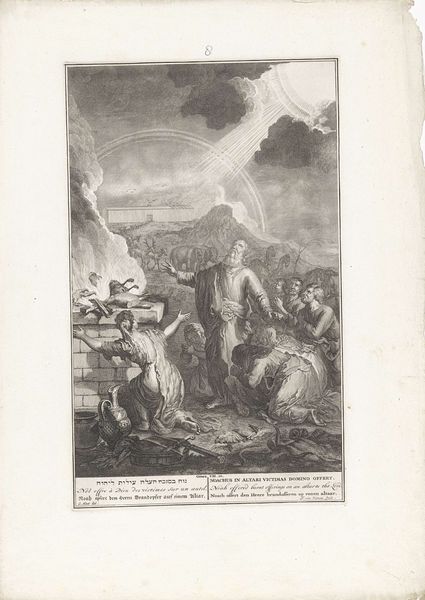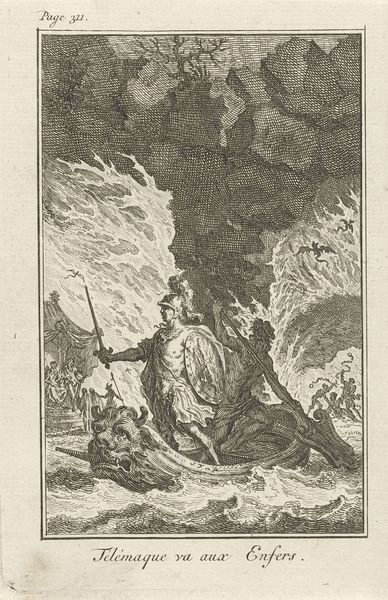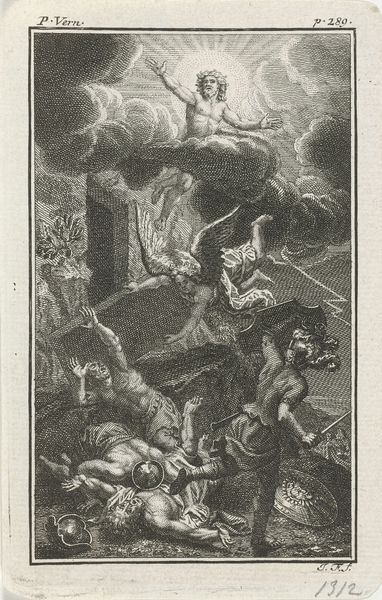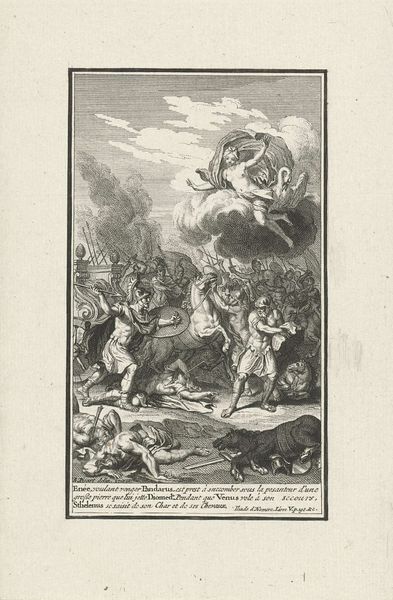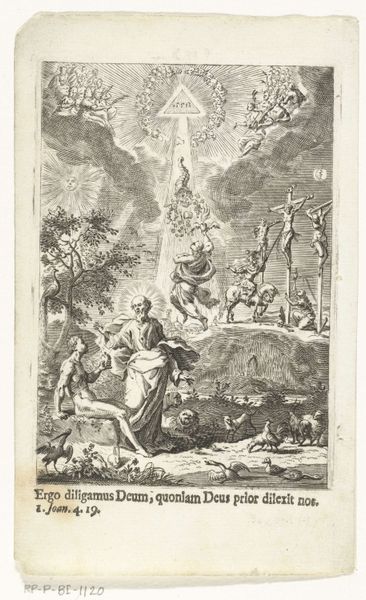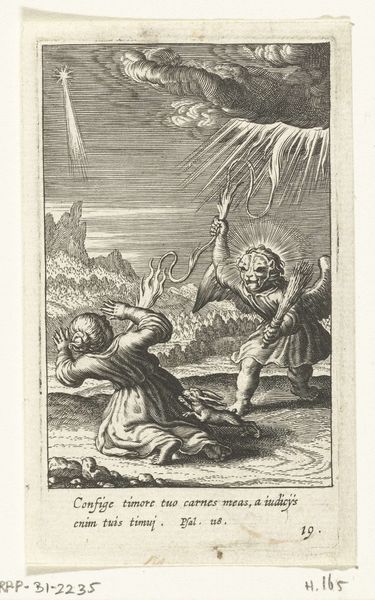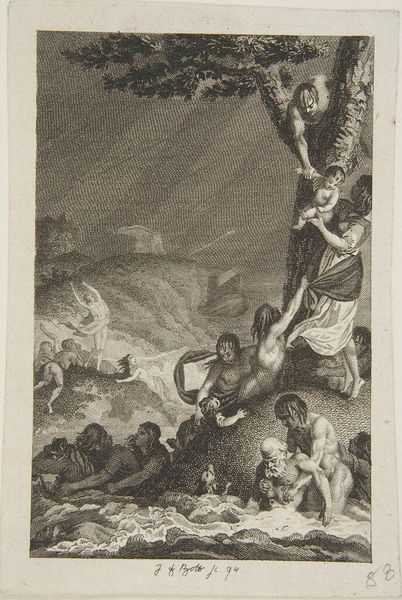
print, engraving
#
aged paper
#
baroque
#
ink paper printed
# print
#
old engraving style
#
history-painting
#
engraving
Dimensions: height 358 mm, width 220 mm
Copyright: Rijks Museum: Open Domain
Curator: Gods verbond met Abraham, made by Joseph Mulder between 1720 and 1728. This engraving on paper depicts a pivotal scene, filled with smoke and figures. What immediately strikes me is the stark contrast between the divine and the human realms represented here. What do you think? Editor: Well, it's certainly dramatic. All that detail in the engraving really captures the chaos of the scene. The looming fire and then the men observing nearby—it all feels very theatrical. What are your first impressions? Curator: Exactly. I'm drawn to the historical context of interpreting biblical narratives through a very specific cultural lens. Think about the power dynamics at play here: Abraham's covenant is a foundational myth, but who gets to interpret that myth? How does Mulder’s 18th-century perspective shape our understanding, perhaps reinforcing certain patriarchal structures or colonial narratives? Editor: I hadn't thought about it like that, actually. So you're saying we shouldn't just see this as a straightforward illustration of a Bible story? Curator: Precisely. We have to consider the politics of representation. How does Mulder’s depiction of Abraham’s relationship with God—likely crafted for a specific audience—speak to the socio-political climate of his time? Editor: That’s fascinating! It completely shifts the way I see the piece. I was so focused on the aesthetic qualities, like the dramatic use of light and shadow. Curator: And that drama isn't accidental! It’s designed to evoke certain feelings and reinforce specific interpretations. This forces us to question not just the artist's intent, but also the way we, as contemporary viewers, engage with historical artworks and their embedded ideologies. Editor: I see your point! It really does highlight the importance of approaching historical artwork with a critical eye. Thank you so much. Curator: Absolutely! This piece provides a potent example of how visual art both reflects and shapes cultural narratives. Considering all the lenses of intersectionality helps reveal complex elements that challenge accepted views of both the artwork and our world.
Comments
No comments
Be the first to comment and join the conversation on the ultimate creative platform.
